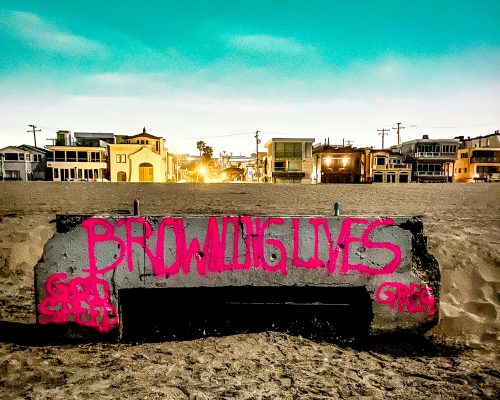
After years of fits and starts, the saga of the Legado Redondo project seems to have an end in sight. But the legacy of the project, fought over by many members of the South Redondo community who felt most negatively impacted, may ripple throughout Redondo Beach for decades. In its wake, the City is facing fights over the South Bay Galleria, the General Plan and a ballot measure that would affect waterfront development for decades to come.
The fight over Legado Redondo began in earnest in 2015, when the mixed-use, commercial/residential project was originally presented to the Redondo Beach Planning Commission.
Early opposition to the project, as well as public outreach that commissioners found lacking, sent it back to the drawing board time and time again. The project shrank from a 180 apartment unit, 36,000 commercial square foot development to a 146-unit, 23,800 square foot project by Nov. 2015.
But that 146 unit project was not submitted with enough time for a thorough review by city staff, and the developer urged a final vote from the commission, leading to a denial vote that set the stage for an appeal before City Council in 2016.
That appeal was finalized in June, following an initial hearing in April and a second review by the Planning Commission in May. At the final meeting, the project passed at 2 a.m. in a shrunken, truncated form, which the developer objected to early on.
“Further reductions would do nothing but cut into the bottom line, and do not pencil out to the applicant,” said Legado lawyer Michale Shonafelt.
Legado’s arguments fell on deaf ears, while community concerns regarding density, traffic and massing caught Council attention. The intersection of Pacific Coast Highway and Palos Verdes Boulevard is among the most congested in the city.
To prevent worsening traffic, and to reduce residential density that brings further traffic, Councilman Bill Brand made a motion to approve a 115-unit, 23,800 square foot project, which passed 3-2. The votes against were by Council members Laura Emdee and Jeff Ginsburg, who said they intended to help the City avoid a lawsuit.
In early December, a resolution appeared to have been found. At its Dec. 13 meeting, the City Council announced it had reached a settlement with Legado to halt a civil suit filed against the City. The settlement also allows Legado to submit a revised project smaller than the version approved by Council.
What the Legado saga did was mobilize a new generation of development activists in Save the Riviera and its related group, Rescue Our Waterfront. Activists with ties to those groups have since made inroads to development projects throughout Redondo Beach, including the South Bay Galleria, which lost anchor tenant Nordstrom in 2015.
This year saw movement toward a redeveloped Galleria, due in response to a revitalized Del Amo Fashion Center in Torrance and falling revenues at the Galleria which have negatively affected the City’s bottom line.
“The Galleria is the economic engine of Redondo Beach,” Mayor Steve Aspel said. “The income from the Galleria pretty much subsidizes all of the other fun stuff in the city.”
Redondo Beach’s 2016-17 Fiscal Year Budget estimates that sales tax revenue will drop by $873,000. That, City Manager Joe Hoefgen said, can be attributed to Nordstrom’s departure and falling sales throughout the mall.
In response, Galleria parent company Forest City is looking to take advantage of the area’s CR-Commercial Regional zoning, which allows for housing development up to 35 units per acre. Preliminary plans have shown as few as 298 or as many as 650 units on the site.
But neighbors, including District 4 City Council candidate Suzy Royds, have felt left in the cold. They worry that development would tank the neighborhood, adding traffic, dashing home values and leading to higher crime rates.
Councilwoman Laura Emdee sees the potential for a new housing development to inject young, talented professionals into the City’s tax base, believing that an upgraded Galleria could “attract success for the entire Artesia corridor, and the right businesses to complement each other.”
A draft Environmental Impact Report on the project has been working its way through the City Planning Department and Forest City, but has been repeatedly delayed.
Antipathy toward new development has led to successful pushes from activists to fully redevelop the city’s current General Plan, which was adopted in 1993 and has been updated in pieces in the years since. The General Plan is a planning and development guideline for the City that looks toward the future while building on the present. Most importantly, it sets standards for both residential density and commercial development throughout the City.
A General Plan Advisory Committee was established by the City Council in December, and will consist of a 27 resident body, yet to be appointed by the Council and Mayor.
But the most significant entity on the development horizon is Measure C, also known as the King Harbor CARE Act, a redefinition of existing waterfront zoning.
Its proponents from Rescue Our Waterfront and Building a Better Redondo say that the CARE Act is “fine-tuning” of 2010’s Measure G, which set development standards in and around King Harbor.
But opponents to the CARE Act believe it is an unrealistic perversion of current zoning measures that would make redevelopment near-impossible.
“The language might not even allow for the replacement of the existing parking decks,” said CenterCal CEO Fred Bruning. “In our view, and our attorneys’ view, that’s not fine-tuning Measure G, that’s killing it.”
The CARE Act would addresses proposed Seaside Lagoon renovation, deeming it necessary for the city to develop a replacement pool of equal water area should it need to be removed. It also places a further cap on development, including any additional parking structures in its net 400,000 square foot limit.
A report on the measure, produced by city staff at Council request, estimated it would cost Redondo Beach $156 million to $196 million in facility improvements and construction. That includes replacement of the Lagoon, as well as garage improvements and the construction of a boat ramp. Staff believes the City would run a $6 million annual budget shortfall as a result.
ROW stands by its Measure, believing it to be the only solution to potential overdevelopment at the waterfront.
“Nearly 7,000 pissed off people signed the CARE Act,” said ROW co-founder Martin Holmes. “This report is saying there’s a doom and gloom situation…the City wants CenterCal.”
Whether or not the voters do as well will be determined at the polls in March. ER









